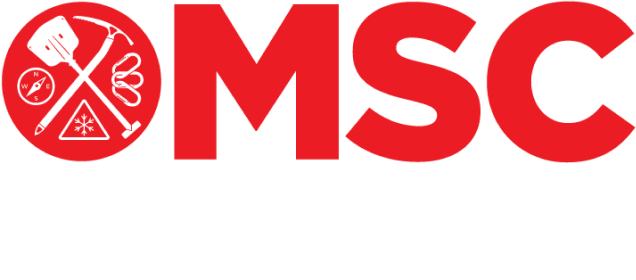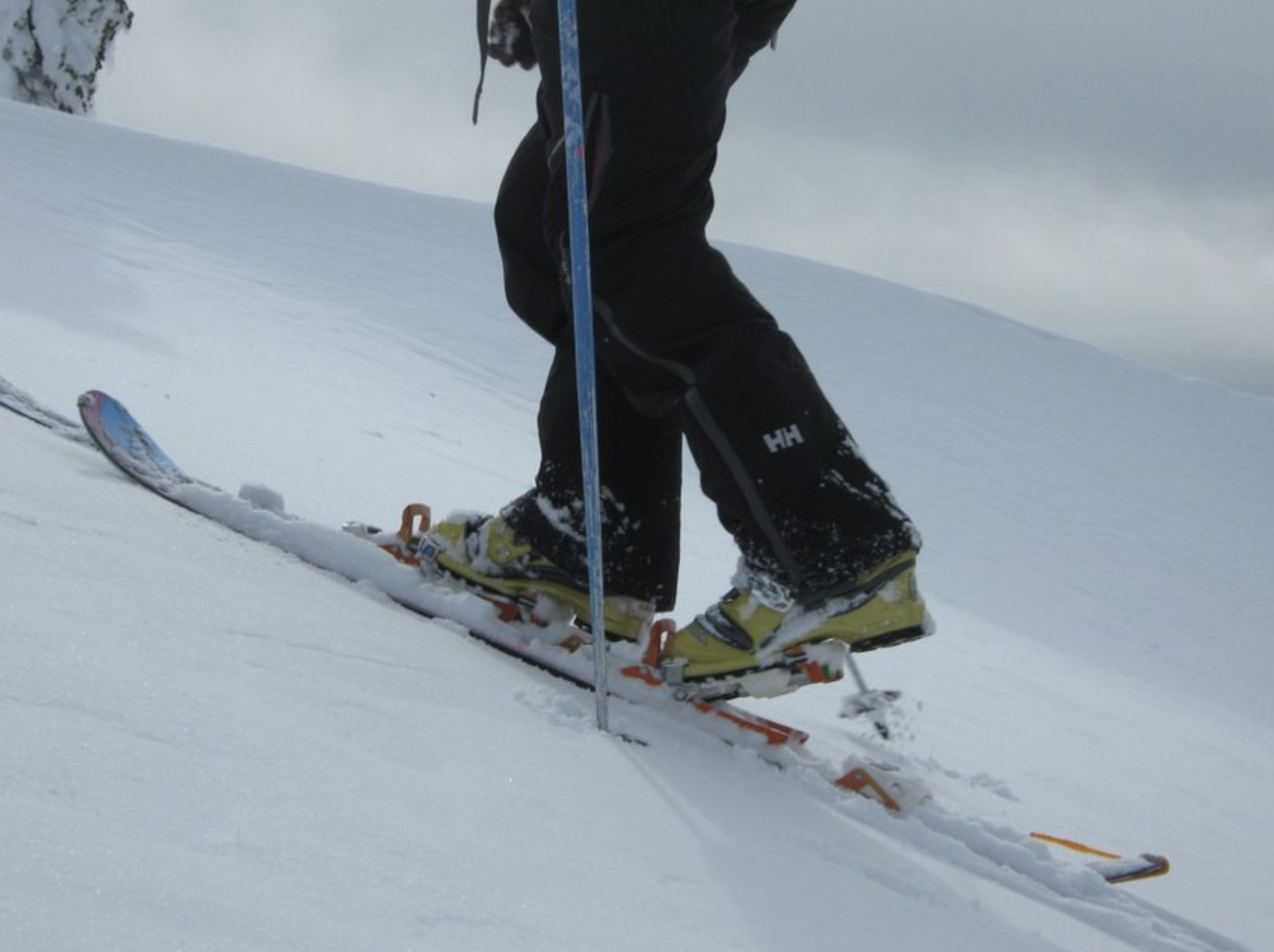Ski Touring and Split Boarding tips
This section sets parameters of what is proven to perform in the Australian backcountry. Every mountain range has its nuances and here’s the gear that works best.
How quickly things have changed. Following a contraction in participation in ski touring through the 90’s and early 00’s we are now experiencing an unprecedented boom in the backcountry thanks largely to two functional developments. Touring bindings and split boards.
Both lighter and stronger than ever before. Telemark still ranks an honourable mention and certainly on some tours covered in this book, lightweight pattern base telemark is a great solution to the challenges of undulating terrain. Largely the efficiencies of travel in the alpine, afforded by new technology, must be appreciated for its simplicity and reliability by comparison to the days of old. Outlined here are the hardware characteristics available to enable safe ski/split touring experience
Tech Bindings and NTN (New Telemark Norm)
In general terms these are much the same thing. A binding with the ability to ‘free-heel’ to enable an uphill climbing mode. Traditionally the telemark binding was ‘always free’ (a philosophical position) yet currently these too, as with tech alpine touring bindings have the option to fasten the heel (formerly referred to as the ‘frankenmark’ binding).
Both incorporate an under boot ski crampon and a variety of heel riser devices to aid on long ascents. The only real difference being a gusseted bellow on the telemark boot to enable contact of the forward sole of the boot, and not the heel in the crouched telemark position of that famous turn. The old plonkers in the midst all grew up on the old 75mm version and whilst it is irrefutable that every turn down the hill in a telemark style is actually a divine ascent to the astral plane, the lack of uniformity and ‘bossy-ness’ is quite unnerving for those transitioning to the off-piste. A matter of personal preference. If you cant ski… don’t start with telemark.
Free the heel… NTN bindings are a fast moving feast of innovation. Start here when the craze started and then dive into the wormhole.
Alpine Touring Bindings
Originally there used to be two kinds of alpine touring bindings. Frame and pin (later known as ‘Tech’). Nowadays frame bindings are relegated as a ‘slack’ country tool. A means to an end, good for kids with growing feet, a gateway tool to get to the backcountry but not well suited to the style of extended touring detailed in the bulk of this text. They are easy to use so they still get around. The weight is cumbersome, and the stiffness now equalled in tech bindings. Like 75mm telemark, this kit is in phase out mode.
Salomon Guardian or Atomic Trackers. same thing… light and cheap. Will get the job done at almost 1kg mounted this is the lightest of the current frame bindings.
The original! Probably for straight Alpine Touring… still the best. Check the website and then dive into a worm hole of other options.
Tech Bindings
Over the last 5 years there has been an explosion in the variety and technical features of tech bindings. Largely due to the expiration of the Dynafit patent. Those poor buggers designed simply the best ski touring binding to date, and now everyone has piled in on the design with fancy colours and extra lightweight functionality. Nothing better than the original, just different and perhaps ‘slicker’. The genius is the clamping toe piece that can work as a pivot in up hill mode, or a vice in collaboration with the pivoting heel piece.
Skis.
Ski touring or backcountry skis are usually lighter than alpine resort skis. In Australia a preference for shorter and wider yet stiffer planks is emerging. An important consideration is that often you are travelling with upwards of 16kg on your back and what performs ‘packless’ changes with additional weight (hence more float from a wider rig). Sidecut increases the skis natural turn arc. This is beneficial when navigating tight trees or breakable crusts which we here in Australia do a lot. On a budget? In ski manufacturer terms ‘All Mountain’ which is used differently by different brands is generally a good place to start for an entry level Australian touring ski. Burlier than the ‘backcountry’ spec and thus arguably a better fit for the mixed bag of conditions the alps will throw at you.
As mentioned above ‘pattern base’ skis still hold their place in the Australian backcountry in terms of suitability to some touring terrain. Largely due to extended touring inevitably involving sections of undulating terrain. They avail the user of the need to transition to skins or scootch / skate through terrain that on pattern base skis is fun short ups and downs. Downside is that they are slow on the down and sticky (even balling up) on warming snow. On really low angled descents, what a tuned waxed ski will slide on, a pattern base ski is reduced to a walk. If you follow a mate into a deep bowl of 20˚ slopes you cannot expect pattern skis to return you to the top. You will need skins as a compliment in steeper terrain. Alas, the skin glue bonds poorly to the lower surface area of the ‘patterned’ section. If you have the luxury of a quiver, these have their place.
Split Boarding
Whilst the splitboarder will take more time to transition from hike to ride than skiers, the general swag associated with board sports sees to it that splitboarders bring the right ride vibe to the hill which has been sadly missing since telemark got new wave. Splitboarders look like they have an awful lot of fun. Truely the splitboard is not a great tool for skiing with, or slipping downhill with skins on, or climbing steep traverses on hard pack snow or soft sun baked corn. Although the tech is developing, the word is that with stiffer boots and boards are enabling a better uphill characteristics so ask around if you are planning on touring hard. Split crampons, boot crampons and an ice axe are somewhat standard kit, as are collapsible ski poles for hiking. Some clip-in binding rigs are now available which is revolutionising the transition time. If you can’t afford these, you can’t afford to mess around at transition time because in a mixed party (skiers and splitters) you will incur the ire of your skiing tour partners.
The old ‘board and snowshoe’ mode is pretty tiresome and from our experience, the snowshoers usually lag and or expire well before the splitboarder so on most of the tours here in this book, snow shoeing is not a great option.



